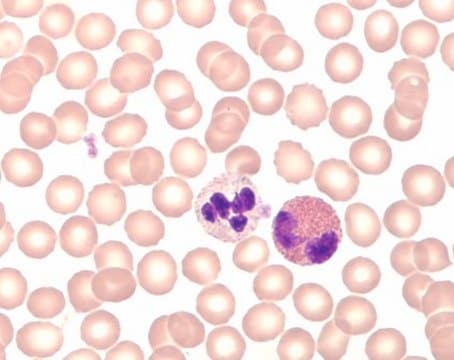1.09269
Papanicolaou′s solution 3d polychromatic solution EA 65
for cytology
About This Item
Produits recommandés
Niveau de qualité
Forme
liquid
IVD
for in vitro diagnostic use
Température de transition
flash point 17 °C
Densité
0.85 g/cm3 at 20 °C
Application(s)
clinical testing
diagnostic assay manufacturing
hematology
histology
Température de stockage
15-25°C
Catégories apparentées
Description générale
The 100 ml bottle provides 300 - 400 stainings. It is registered as IVD and CE certified product and can be used for clinical diagnostics. For more details, please see instructions for use (IFU). The IFU can be downloaded from this webpage.
Remarque sur l'analyse
Nuclei: blue to dark violet
Cyanophilic cytoplasm: blue-green to blue-grey
Eosinophilic cytoplasm: pink to red-violet
Mention d'avertissement
Danger
Mentions de danger
Conseils de prudence
Classification des risques
Eye Irrit. 2 - Flam. Liq. 2 - Skin Sens. 1
Code de la classe de stockage
3 - Flammable liquids
Classe de danger pour l'eau (WGK)
WGK 2
Point d'éclair (°F)
62.6 °F
Point d'éclair (°C)
17 °C
Certificats d'analyse (COA)
Recherchez un Certificats d'analyse (COA) en saisissant le numéro de lot du produit. Les numéros de lot figurent sur l'étiquette du produit après les mots "Lot" ou "Batch".
Déjà en possession de ce produit ?
Retrouvez la documentation relative aux produits que vous avez récemment achetés dans la Bibliothèque de documents.
Notre équipe de scientifiques dispose d'une expérience dans tous les secteurs de la recherche, notamment en sciences de la vie, science des matériaux, synthèse chimique, chromatographie, analyse et dans de nombreux autres domaines..
Contacter notre Service technique










